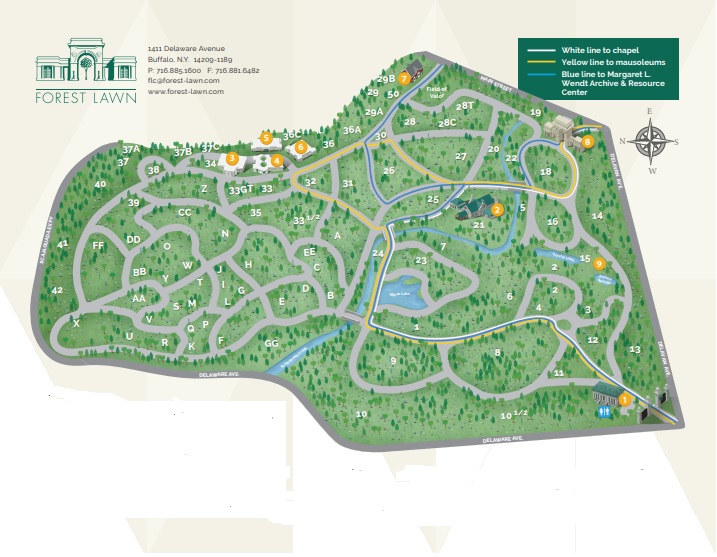Seymour H. Knox I
Fun Facts
After Seymour Knox death, his wife built a new mansion on Delaware Avenue for her and their children, designed by New York City architect C. P. H. Gilbert, known today as the Mrs. Seymour H. Knox House.
Seymour Knox was the father of Seymour H. Knox II and grandfather of Seymour H. Knox III and Northrup Knox, the co-founders of the Buffalo Sabres in the National Hockey League.
Seymour Knox loved a good mansion and lived in 4 during his life time. The addresses of those mansions in the order they lived in Buffalo, New York are 414 Porter Avenue, 467 Linwood, 1049 Delaware Avenue (now 1035) and 806 Delaware Avenue.
Cemetery Information:
Final Resting Place:
Forest Lawn Cemetery
1990 Main Road
Buffalo, New York, 14208
USA
North America
Map:

Grave Location:
Knox Mausoleum, Section 23, Lot 2, Niche 4Grave Location Description
As you enter the cemetery follow the white line in the road until you get to Mirror Lake which borders Section 23. Drive around Section 23 until you see the 4-pillored Knox mausoleum on Mausoleum Row.





